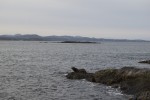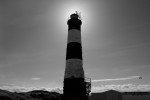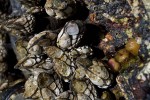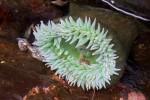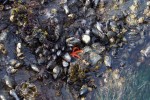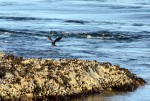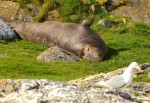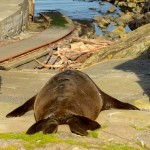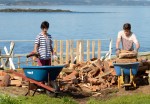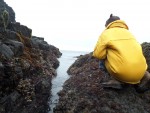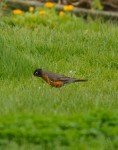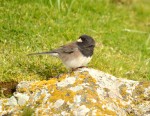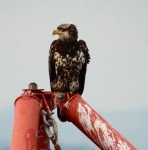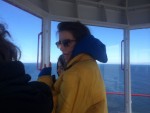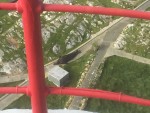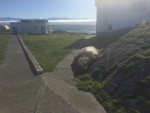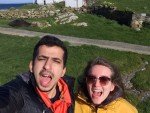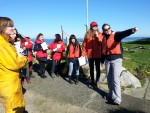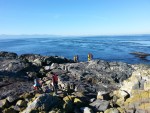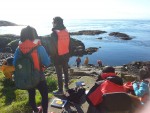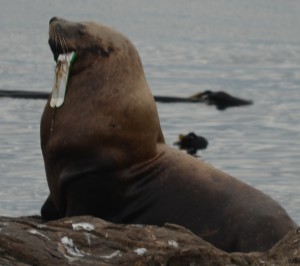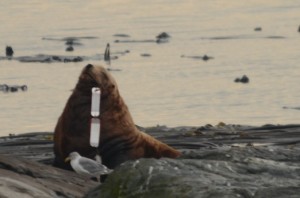Overcast and rain in the morning, sunny in afternoon
Wind: 1-11 knots from the W and N in the morning, 22-46 knots from the W from the late morning onwards
Air Temperature: Low 9.3°C, High 11.3°C
Ocean Temperature: 9.2°C
A gale warning in the afternoon, with winds gusts up to 46 knots, remained in effect for the rest of the day. The gulls had a hard time sitting and claiming their nesting sites when the wind gusts reached 46 knots. Due to the winds, the afternoon was filled with indoor tasks like cleaning, organizing the basement and drinking tea. The winds diminished in the evening.
Hanne Christensen, one of the visiting Pearson students, took some photos around the island yesterday and today. They are included in the gallery below.
- Rough seas off the south side of the ecological reserve.
- A sea lion leaps out of the water, while another one lays on the South Islands.
- A california sea lion on the west side of Great Race. Photo: Hanne Christensen
- The lighthouse eclipses the sun. Photo: Hanne Christensen
- Goose-neck barnacles and intertidal anemones. Photo: Hanne Christensen
- Intertidal anemone. Photo: Hanne Christensen
- A blood star amongst mussels in the intertidal zone. Photo: Hanne Christensen



